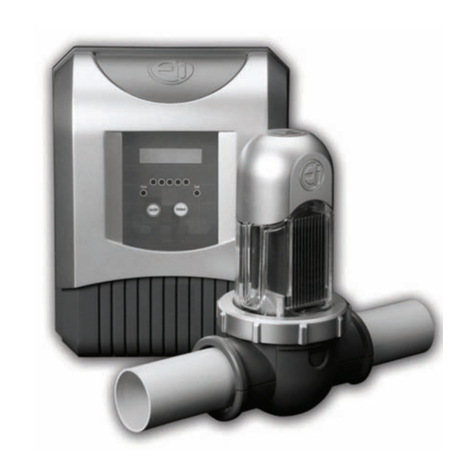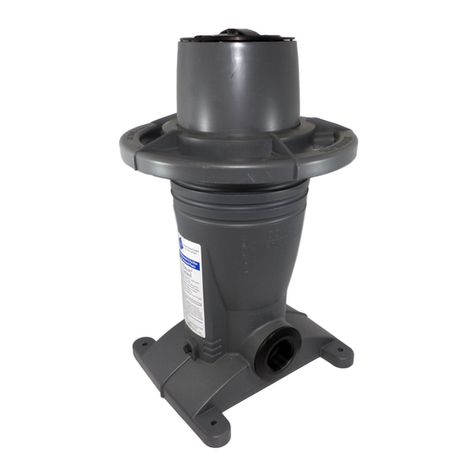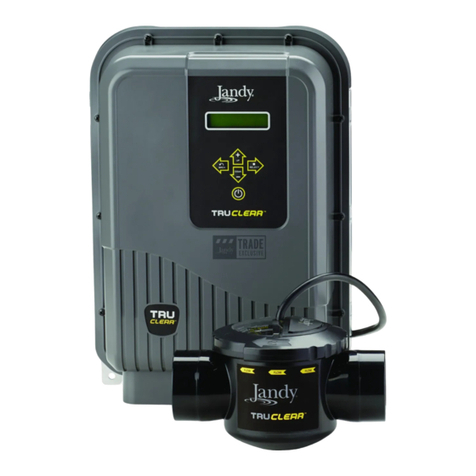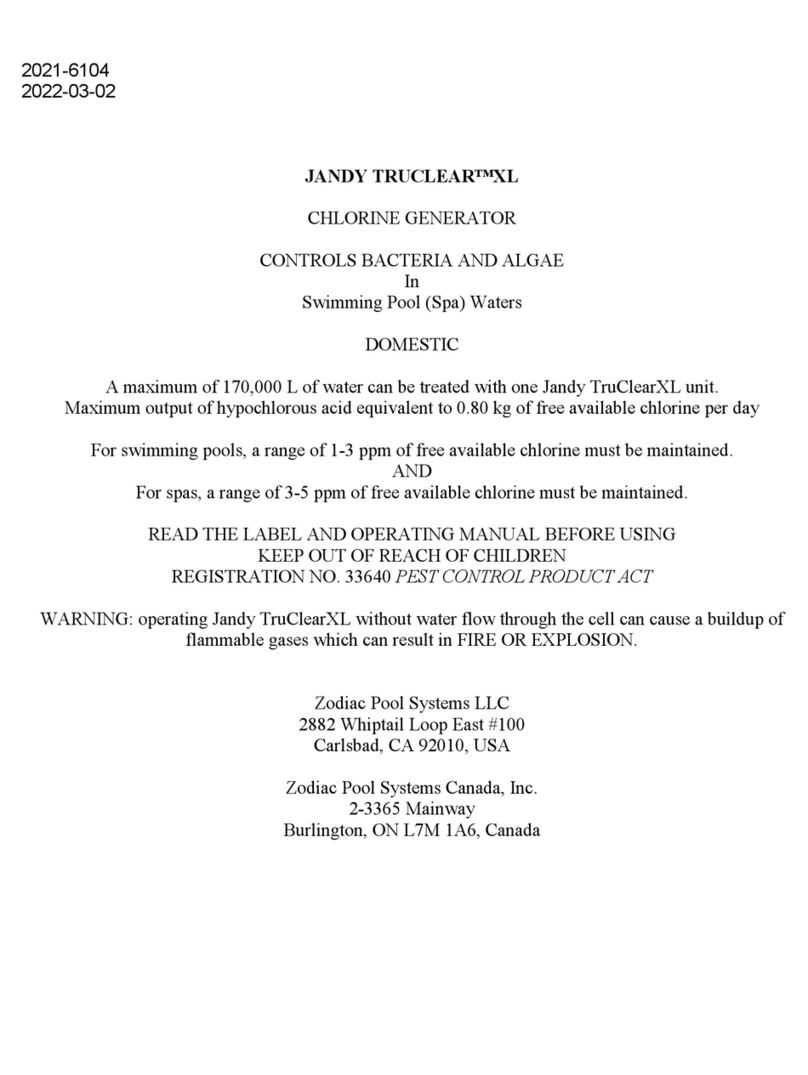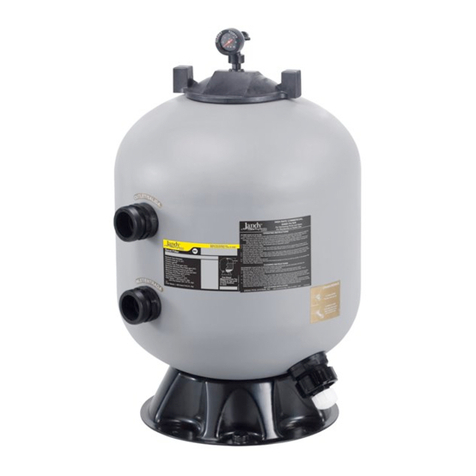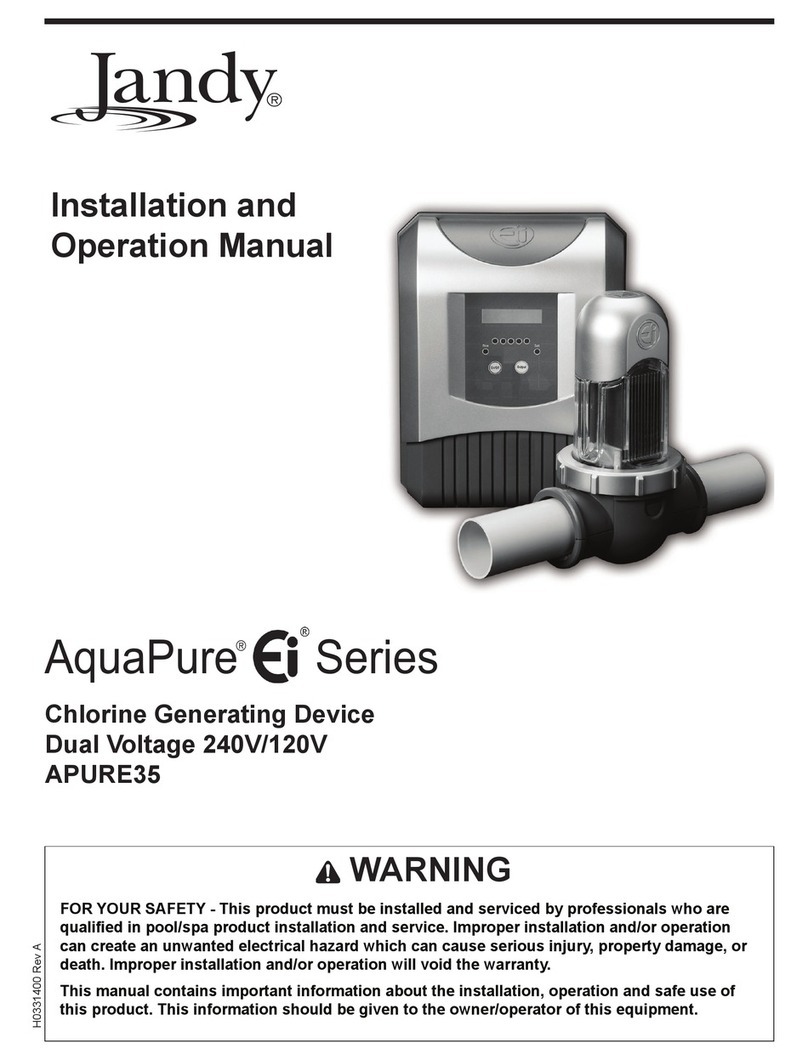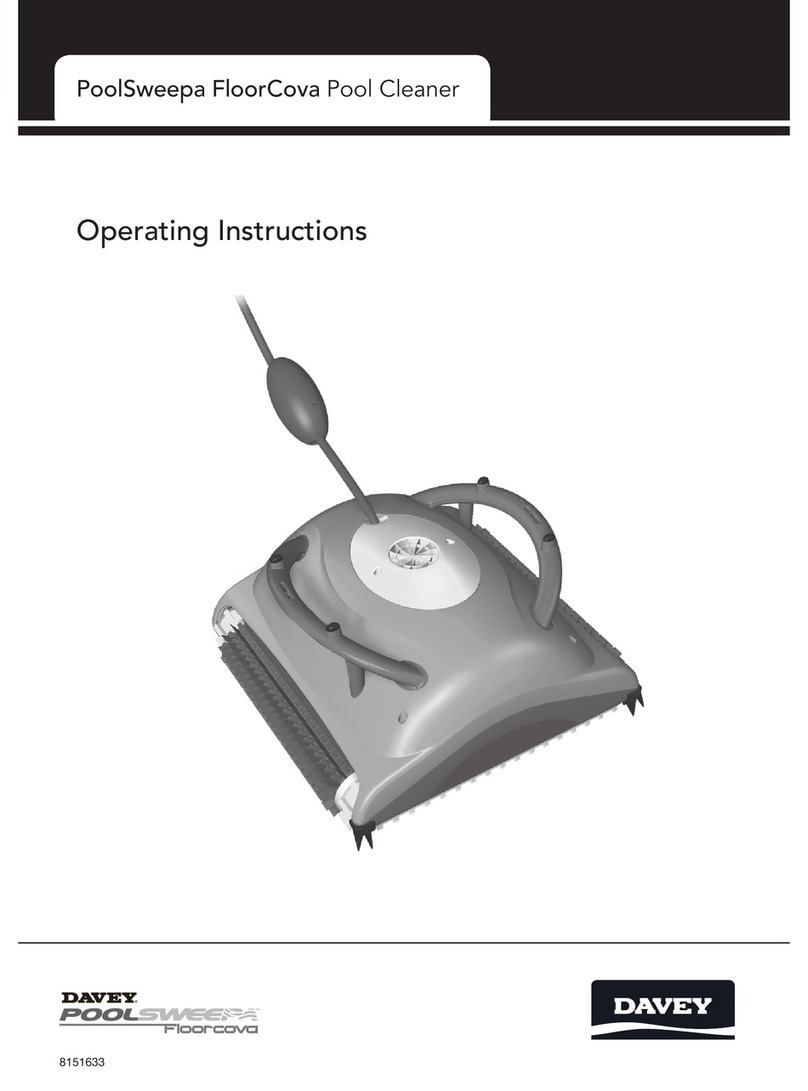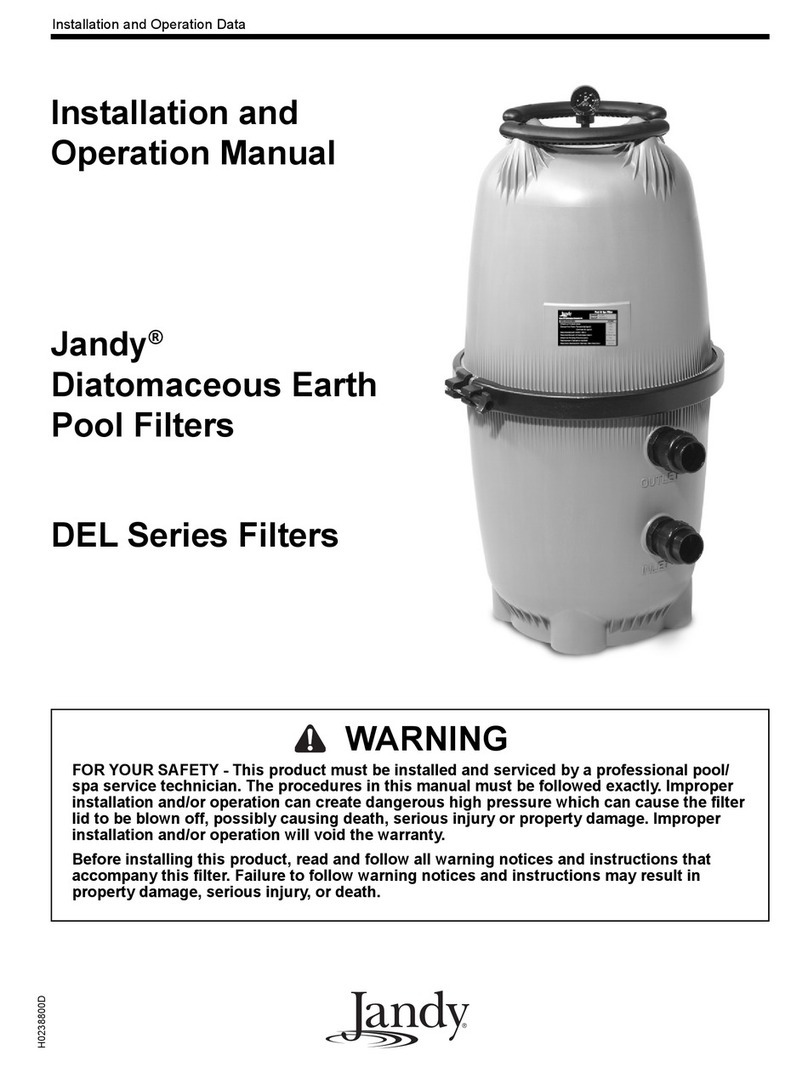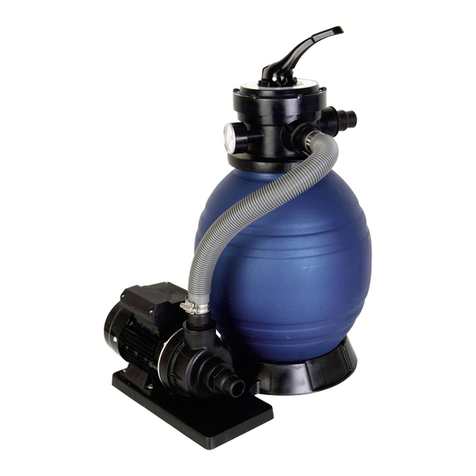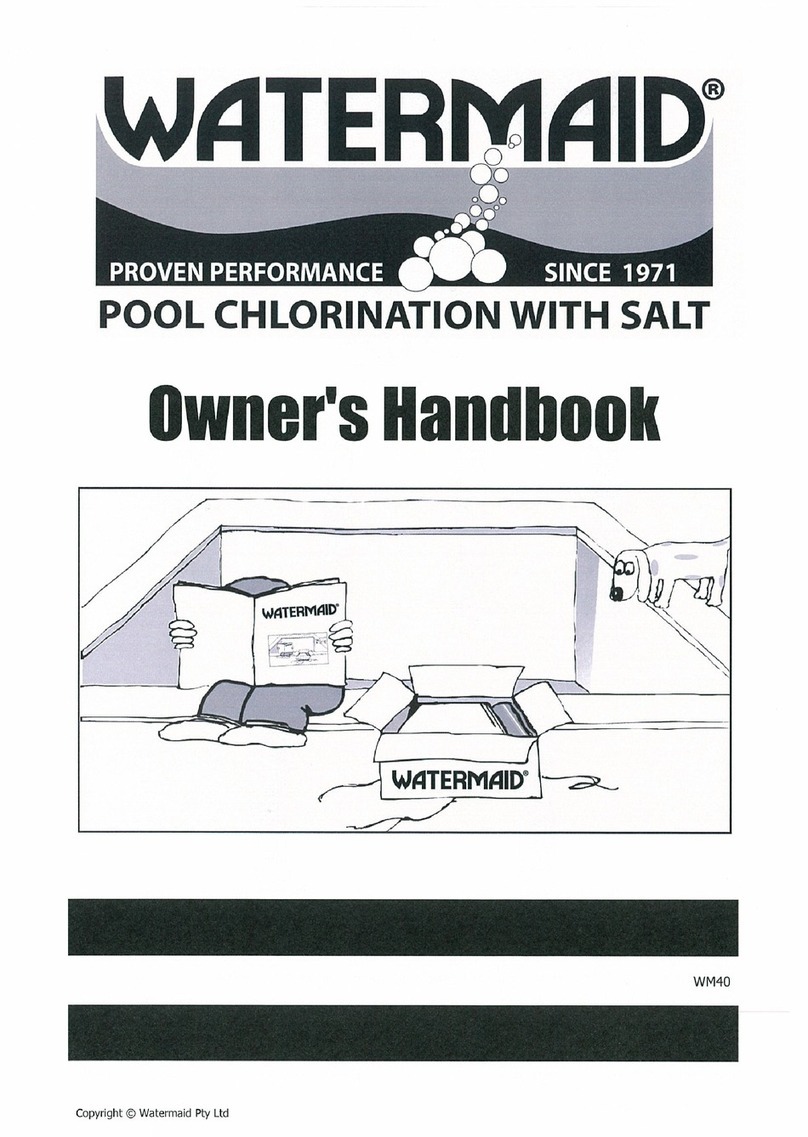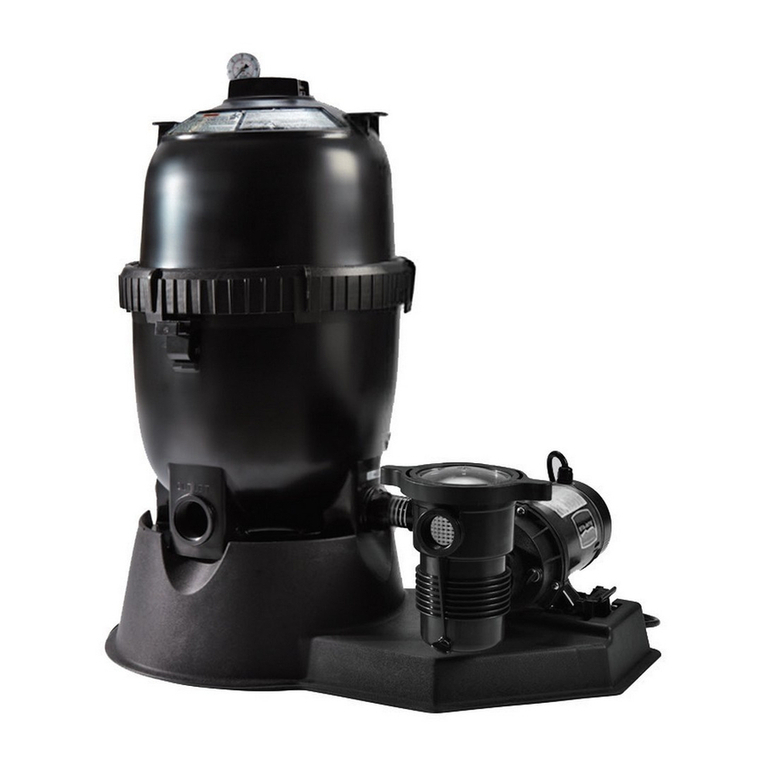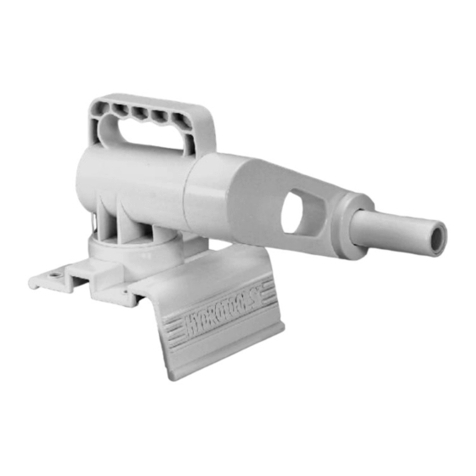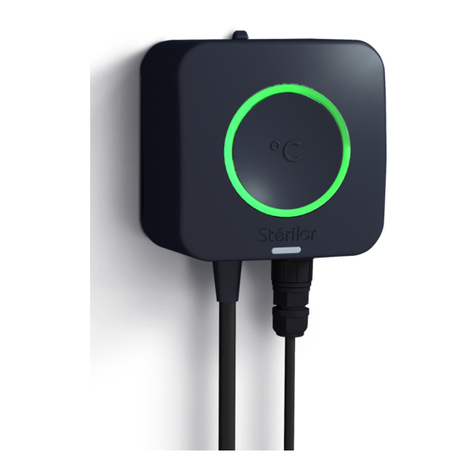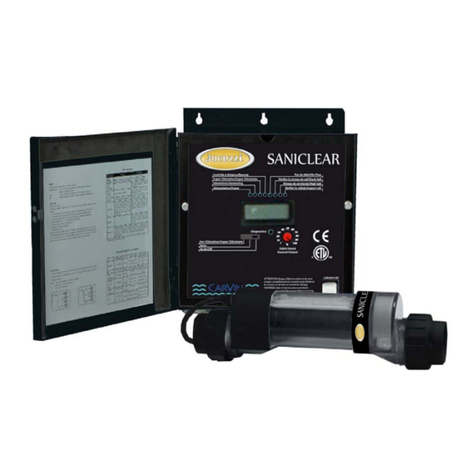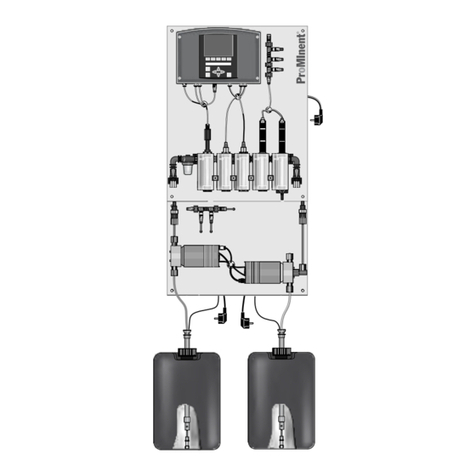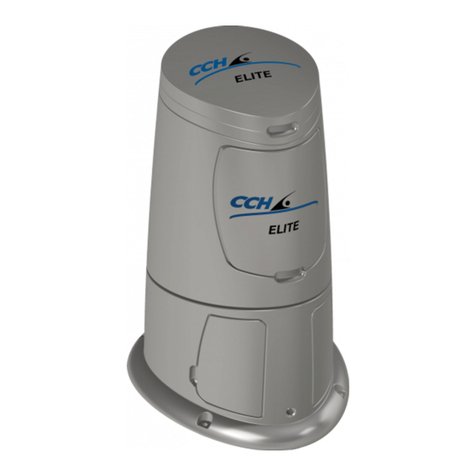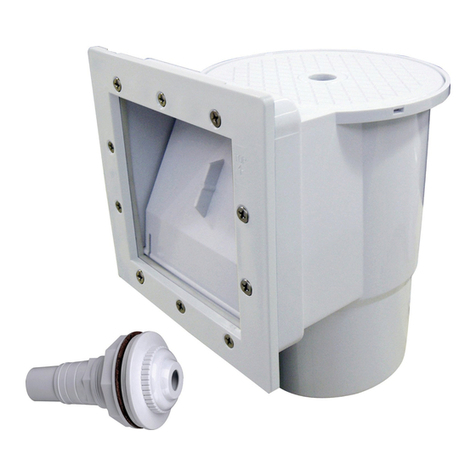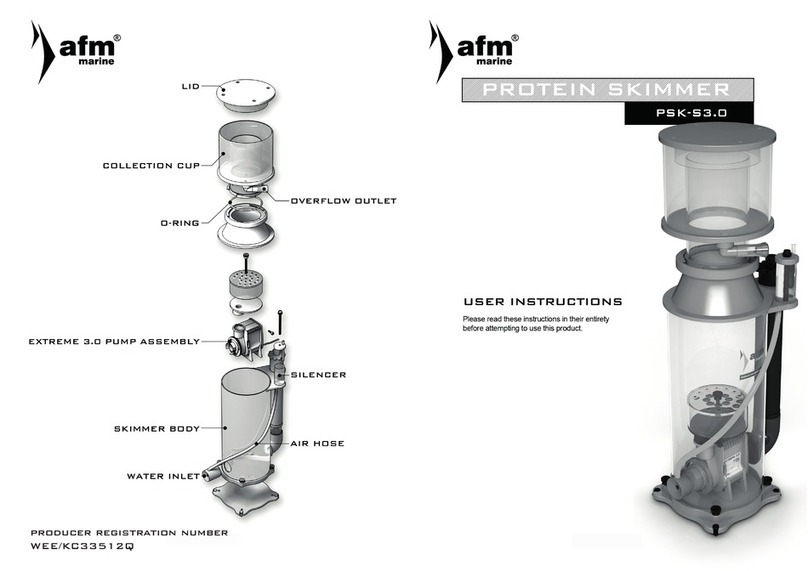
•The use of alcohol, drugs, or medication before or during spa or hot tub use may lead to unconsciousness with the
possibility of drowning.
•Obese persons and persons with a history of heart disease, low or high blood pressure, circulatory system
problems, or diabetes should consult a physician before using a spa.
•Persons using medication should consult a physician before using a spa or hot tub since some medication may
induce drowsiness while other medication may affect heart rate, blood pressure, and circulation.
WARNING
•For proper sanitation, spas must be completely drained periodically. The number of days between COMPLETE
SPA DRAINAGE is equal to the volume of spa water in litres, divided by 10 times the maximum number of daily
spa users. Refill spa with water and repeat DIRECTIONS FOR USE of the device.
•People with infectious diseases should not use a spa or hot tub.
•To avoid injury, exercise care when entering or exiting the spa or hot tub.
•Do not use drugs or alcohol before or during the use of a spa or hot tub to avoid unconsciousness and
possible drowning.
•Pregnant or possibly pregnant women should consult a physician before using a spa or hot tub.
•Water temperature in excess of 38°C (100°F) may be injurious to your health.
•Before entering a spa or hot tub measure the water temperature with an accurate thermometer.
•Do not use a spa or hot tub immediately following strenuous exercise.
•Prolonged immersion in a spa or hot tub may be injurious to your health.
•Do not permit any electric appliance (such as a light, telephone, radio, or television) within 1.5 m (5 ft.)of
a spa or hot tub.
•The use of alcohol, drugs or medication can greatly increase the risk of fatal hyperthermia in hot tubs and spas.
•Water temperature in excess of 38°C (100°F) may be hazardous to your health.
CAUTION
•This device is intended for use with permanent swimming pools and swimming pools with a built-in spa. It cannot
be used in stand-alone spas. Do not use with storable pools. A permanently-installed pool is constructed in or on
the ground or in a building such that it cannot be readily disassembled for storage. A storable pool is constructed
so that it is capable of being readily disassembled for storage and reassembled to its original integrity.
CAUTION
•It is important to note that certain materials used in and around swimming pools and spas may not be compatible
with chemicals commonly used to purify pool and spa water (e.g. acids, chlorine, salt, stabilizers, etc.).
•Zodiac Pool Systems, Inc. does not warrant or guarantee that the chlorinated water generated by the Zodiac
AquaPure Ei Series APURE35C chlorine generating device will not damage or destroy certain types of plants,
decking, coping and other materials in and around your pool and/or spa. Before selecting materials to be used in
and around your pool and/or spa, please discuss all options with your contractor to assess the compatibility of
such materials and chemicals.
•When mixing acid with water, ALWAYS ADD ACID TO WATER. NEVER ADD WATER TO ACID.
•Some helpful considerations may include:
•Maintaining high salt and chlorine levels above recommended range can contribute to corrosion of pool or spa
equipment.
•Choosing plants that can withstand splash out of pool water containing chlorine and/or salt and other water
purification chemicals.
•All metal components used in and around a pool should be of a high grade, quality stainless steel.
